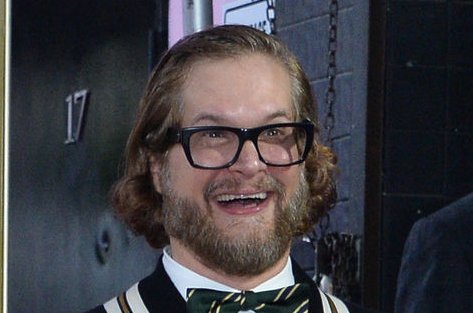1 of 5 | Bryan Fuller discusses LGBTQ themes in horror movies in "Queer for Fear." File Photo by Jim Ruymen/UPI |
License Photo
LOS ANGELES, Sept. 30 (UPI) -- Bryan Fuller said his LGBTQ horror docuseries, Queer for Fear: The History of Queer Horror, premiering Friday on Shudder, reflects the community's struggle for survival.
"All you need is one example of survival to know it's possible for you," Fuller said on a recent Television Critics Association panel. "I think that really resonates with a lot of queer audiences who are drawn to horror stories."
Fuller, whose horror credentials include the NBC adaptation of Hannibal and the grim reaper comedy, Dead Like Me, said that LGBTQ audiences may relate to being made to feel like horror movies' monsters or survivors.
"If we can survive an abusive parent like Danny Torrance in The Shining. then there's hope for us," he said.
Filmmaker Kimberly Pierce is featured in Queer for Fear. The director of Boys Don't Cry and the 2013 Carrie said she bonded with fellow interview subjects over their horror interests.
"We were all having our own individual experiences feeling isolated in coming to these materials," Pierce said. "Whether it was Frankenstein, whether it was Mrs. Danvers in Rebecca, we were all trying to figure ourselves out through it."
Pierce said she also related to horror movie monsters, further claiming the LGBTQ community "co-opted the monster." She said monsters empower LGBTQ people to stop struggling to conform to straight society.
"It's like, 'Oh, I don't want to be weird. I don't want to be queer. I don't want to be the monster,'" Pierce said. "I am totally weird. I'm totally queer, and I am totally a monster, so let's have a good time with it."
Queer for Fear also analyzes the trend in which the LGBTQ surrogate or openly LGBTQ characters die as a sacrifice in horror movies and other media.
Fuller said the trend dates to the old Hollywood Hays Code, which restricted profanity, nudity, realistic violence and "sexual persuasion." Fuller said the trend persisted long after the end of the Hays code in 1968.
"Queers have to metaphorically kill their queerness to survive their own kind of sociological situation," Fuller said. "It's an interesting question in both a real application of the horrors of queerness and the allegorical horrors."
Fuller said that researching Queer for Fear educated him about the gay predilections of famous horror authors.
"Bram Stoker, yes, was married and had children, but he married Oscar Wilde's beard after Oscar Wilde was arrested for homosexuality," Fuller said. "[Stoker] wrote all of these thirsty love letters to Walt Whitman."
Queer for Fear also will include an exploration of Fuller's Hannibal adaptation. He said he interpreted the franchise as queer when he saw 1991's Oscar winner, The Silence of the Lambs.
"I thought Anthony Hopkins came off as queer, I thought Jodie Foster came off as queer and I thought Buffalo Bill came off as queer," Fuller said. "It felt like this really broad spectrum of queer representation, even though it was a mainstream horror film."
The show, which ran for three seasons on NBC, depicted FBI agent Will Graham's (Hugh Dancy) friendship with Hannibal Lecter (Mads Mikkelsen) before Graham captured the serial killer.
"Making Hannibal explicitly queer, in love with Will Graham, it just felt like a natural extrapolation," Fuller said. "We also have Margot Verger and Alana Bloom, the very smart murder wives that get away with it all."
New episodes of the four-part Queer for Fear premiere Fridays on Shudder.















